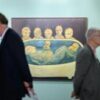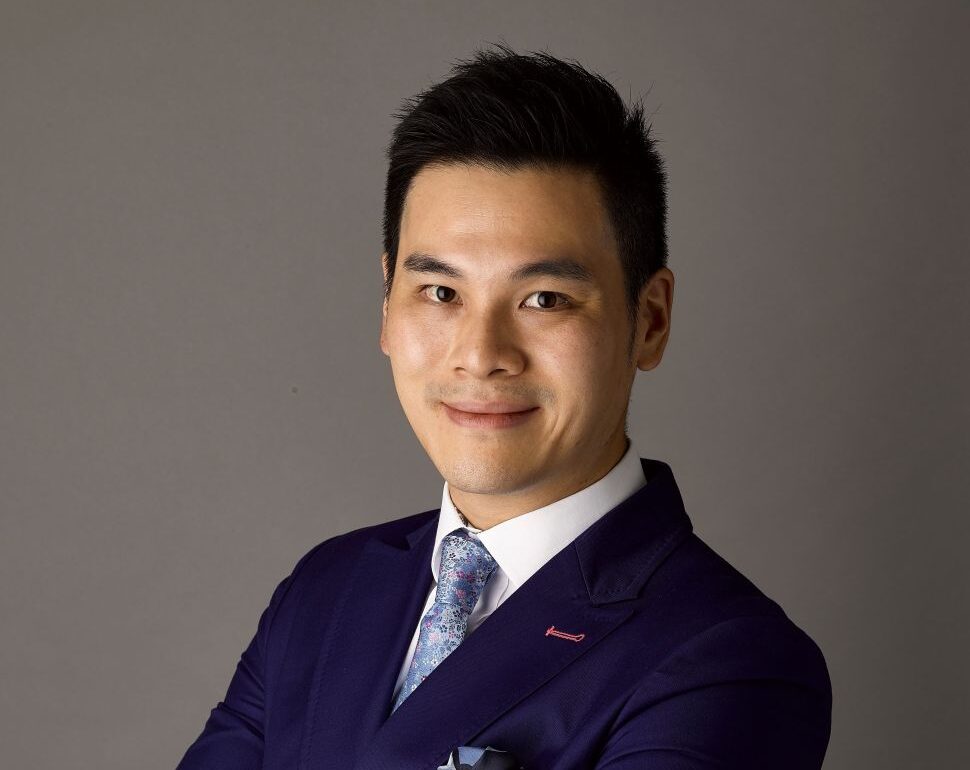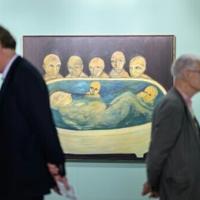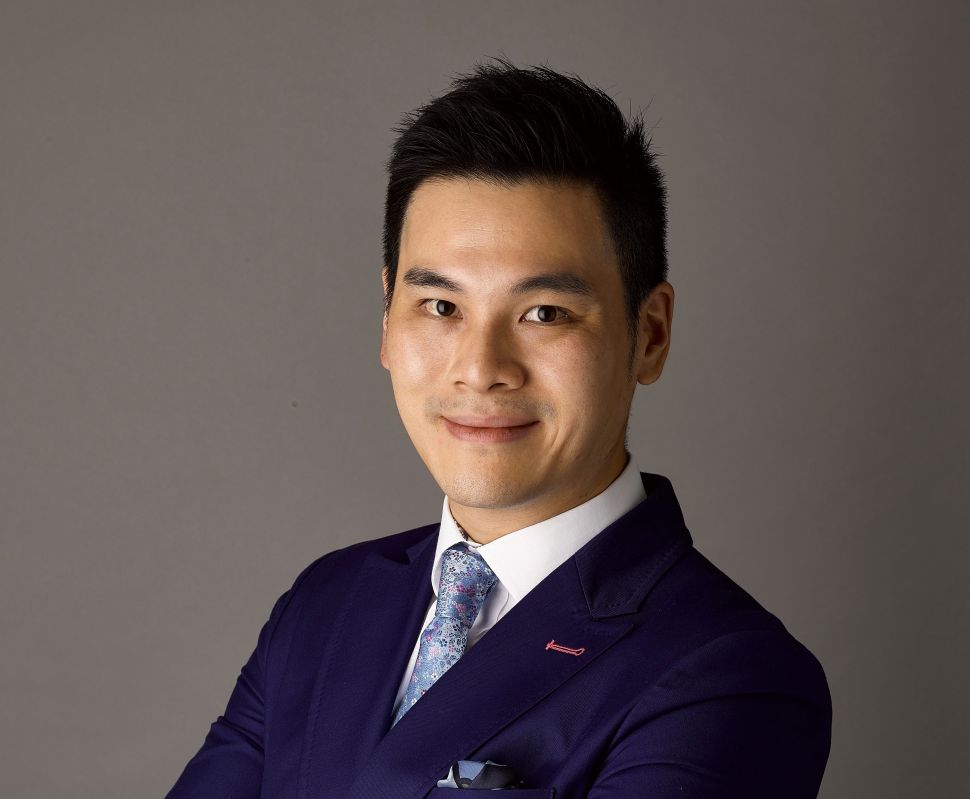
Born and raised in Hong Kong, Felix Kwok—head of the Sotheby’s Modern Art department in Asia—plays a critical role in the strategic growth of the auction house in this vital art hub and the entire region. He was the brains behind several record-setting sales, and as an auctioneer, hammered two of Sotheby’s world auction records in Chinese Paintings. In 2022, he was featured in Apollo magazine’s “40 Under 40 Asia-Pacific” list. And in his thirty year career, he has seen his regional market profoundly expand and diversify. He started that career as a trainee in the 20th-century Chinese department, but so much has changed since then. “It was a small department,” he told Observer, “because Sotheby’s would only sell Chinese oil paintings. At that time, Chinese oil painting was a tiny niche category from centuries of Chinese culture, bringing modest sale results at auction. I remember my first auction: it was HK$207 million. In April 2021, in my first sale as the head of Modern, I sold HK$1.5 billion Hong, six times more. I think this illustrates the growth quite well.”
With Sotheby’s set to open its new Asian Pacific headquarters, Sotheby’s Maison, in central Hong Kong later this month, we met with Kwok on a hot day in early July to discuss the auction house’s strategy for the region and the evolution of the Asian market.
As we sat down at The Lounge in JW Marriott’s Pacific Palace in Hong Kong (just downstairs from the Maison’s current offices), Kwok made immediately clear what he wanted to discuss: how the Asian market has transformed in terms of sales results, geographical and demographic extension of the audience and, more importantly, the spectrum of types of art and luxury items buyers are chasing at auction. “Fifty years ago in Hong Kong, people collected ceramics. Today, the spectrum of collecting is much broader,” Kwok said. “Our business sales department grew from 20th-century Chinese art to Modern Asian art and then to international modern art. Ten years ago, I wouldn’t sell Japanese art, and now, we are selling Chinese, Japanese, Vietnamese, Singaporean, Filipino and French art. We demonstrated the capacity of Asia and how broadly we could accept the conception of ‘modernism.’”
During our conversation, Kwok was animated by genuine enthusiasm and an innate friendliness. He repeatedly stressed how deeply he cares about maintaining relationships with buyers. In fact, Kwok referred to them as friends: “I always take my collectors as my best friends, and our shared passion will always be art collecting and promoting it. Sometimes it’s not just about collection, and it’s not just about transactions. It’s also about keeping you in my mind when I see something good for you.” It’s a different approach in a field where the atmosphere can feel not just exclusive but also impersonal. But Kowk pointed out that the expansion of the Asian market could not happen without this continuous client engagement involving education, sharing and personal attention: “When someone wants to sell a painting, we want to find a new home for that. And when someone wants to buy something, we must give them the best thing.”
Client loyalty and dedication, however, are only one factor in the region’s rise. Kwok quickly understood the importance of also implementing a more engaging marketing strategy with storytelling that would make it feel like the auction house was both a well-curated and trustworthy tastemaker and ‘cool’ (in ways that would appeal to different generations). “We are constantly trying to push our boundaries for the aesthetic and storytelling to create excitement, inspiration and new opportunities.” In that vein, Kwok was behind the unprecedented collaboration between Sotheby’s and international film director Wong Kar Wai, creating the first Asian film NFT auction in 2021. The piece eventually sold for HK$4.28 million (around $550,000) dollars with the buyer’s premium at Sotheby’s Modern Art Evening Sale.

More importantly, Kwok has been instrumental in promoting the internationalization of modern Asian art while also introducing modern Western art to Asia by drawing parallels and emphasizing mutual exchange. He introduced the first Picasso to Hong Kong in an auction featuring works by Western and Eastern masters (specifically Sanyu) in conversation.
Sanyu was one of the earliest Chinese artists to study in Paris and a classic name in Asian modernism. Also called the “Chinese Matisse,” Sanyu’s auction record was set at Sotheby’s with Nu (1965), which was sold in 2022 for HK$197 million (more than $25 million). Picasso and Sanyu, as Kwok explains, were friends, but their friendship is an untold story. “You can find an article written by Sanyu in 1942 where he defends Picasso from criticism,” Kwok said, and that’s the story he built on for a successful sale. Notable: Kwok is behind six of the top seven Asian auction records for Pablo Picasso, including the top auction record of HK$191 million.
This isn’t to say Kwok is working alone to elevate art-at-auction in the region. He freely admits that exhibitions organized by local institutions have also helped to drive interest and high results for these international artists. For instance, a major Joan Mirò show in 2023 at the Hong Kong Museum of Art (HKMoA) resulted in the HK$50,574,500 sale of a Mirò at auction. The city will host an extensive Picasso survey (“Picasso for Asia: A Conversation” at the M+ museum) coinciding with Art Basel Hong Kong, and Kwok is very optimistic that this will further grow his market in the region.




Successful market operations are, of course, the result of a necessary synergy of in-depth scholarship and creativity. Kwok relies on his team’s expertise, versatility and forward-thinking attitudes: “We have Nicholas Chow, who was good at Chinese works of art, but he is also really good at making it sexy to our clients. Then we have great Chinese painting experts such as C.K. Cheung, Carmen Ip and Steven Zuo, who have excellent scholarship and who make sure they always deliver authenticity and share the value of the painting with our clients. And as head of Modern, I’m always happy to deliver the academic value and the greatest marketing strategy across items.”
Kwok sees this as the only way the auction house can inspire and nourish the clients’ sensibilities and help them build collections within a more global context—something necessary to secure the region’s cultural future. To that end, he explained that some very progressive collections are beginning to take shape in the region. “I’m proud of our collectors because they curate the collection in many different ways: we have hardcore 20th-century Chinese collectors who would like to build the history of art in the 20th Century; we have collectors for contemporary who collect young rising stars, but they now also want to take one step back to collect some blue chips and leverage the risk. And we have collectors of traditional Chinese works of art and Chinese paintings who try to be more avant-garde; that’s why they moved forward to collect some modern masters. Some collectors can be very specific, for example wanting to build a collection of only LGBTQ artists.”
However, all these new dynamics are just part of a broader phenomenon: “The entirety of Asia is going through a transformation in terms of what art means to people and to localities,” he said. “For many years, art was essential to a limited group of people, primarily professionals or wealthy people, but art is now meaningful for everybody and has become part of the lifestyle, well-being and personal education for many here. Governments everywhere take it seriously, knowing it can enhance the city or the country in the foreseeable future—it’s a strategic development everywhere.”
Recently, there has been a lot of discussion about which city will eventually be the central art hub in Asia. When asked about which locality he thinks will become the leading marketplace, Kwok responded that he sees the healthy competition between cities as contributing to further development: “When we talk about Europe, we have London, we have Paris. In addition, we have Barcelona, Milan, Dusseldorf and Berlin. Every European city is an art hub, and the competition creates diversity and more energy to push the development of art and culture. In the past ten years in Asia, we have maybe focused on Hong Kong. However, we have probably also started looking at Shanghai and Beijing in the last five years. During Covid, we saw major development in Singapore, Seoul, Taipei and Tokyo, so it is encouraging because it’s not just about Hong Kong anymore; there are many more satellites and developing art hubs in Asia.”
The new Sotheby’s flagship will play a crucial role in Hong Kong’s art scene but, more broadly, could become a center for the entirety of Southeast Asia. This region offers significant growth opportunities to compensate for others slowing down, as Kwok stressed the untapped potential of cities such as Singapore. “During the pandemic, we relaunched our Singapore auction, and it’s now the other significantly growing hub of art and culture in Southeast Asia. If you go to the National Gallery of Singapore, you can see their vision and ambition. It’s all over Southeast Asia; they’re showing off Singaporean art and taking themselves as the hub for Southeast Asian culture. That’s why you can see Vietnamese artworks with, you know, Indonesian, Pinoy, Malaysian and every single country’s masterpieces. Also, there are new Singaporeans who moved to Singapore during Covid. We have mainland China, Hong Kong and Taiwanese, or they travel between the original places to Singapore.”
SEE ALSO: The Armory Show Announces Kyla McMillan as New Director Ahead of the 2024 Fair
According to Kwok, the excitement for auctions in Singapore often causes delays, as too many people want to attend and the auction house is sometimes forced to stop the registration. “We always have too many clients to register a paddle,” he explained. “We always have a long queue. They want to try it. I think we provide things at different levels, and they want to try from the beginning.” Those are new Singaporeans and new buyers, though, which means they have different tastes and more effort goes into each sale. “They might be more interested in Chinese categories, but we also bring in whiskey, where Singapore has a comparative advantage because Hong Kong has no tax on red wine, but it still has a tax on spirits, which Singapore doesn’t have.” Buyers are more likely to be seeking artworks to decorate and enhance the quality of their living spaces in Singapore. “We gave them a wide spectrum of works from local masters to Chinese masters and rising stars, so they have a variety of works to appreciate and choose from. It also gives them a vision of what art could be in Singapore and how it could be part of their wealth and their life.”
Kwok is solidly optimistic, and when we asked about the market slowdown across regions compared to some years ago, he responded with the same confidence he maintained throughout the conversation: “Being a broker, the middle person and the market maker, we should always be hopeful and creative because we are the ones to provide the playground; that’s why we always need to be inventive, to get people to stay interested. We always want to make sure ourselves and our friends feel that auctions at Sotheby’s are still the right playground to have fun.”
As markets around the globe prepare for a significant transfer of wealth, not only generational but also geographical, this ambitious attitude can give us insight into how the region’s art scene will probably continue striving and how this resilient and proactive approach could create a new course for the market. Kwok pointed to the importance of mentality and framing in the face of uncertain market conditions. “When discussing business or investment, we know theoretically that we should buy low and sell high. Now is the time to buy low, not only when it comes to buying art but also for investing in the industry. When there’s downtime, and you invest it correctly, people will value you and see you as an important friend and strategic partner. I’m a homegrown specialist in Hong Kong, and at Sotheby’s, I have seen how we grew from the beginning. Compared to 2012, I’m still feeling happy. I think it’s time to be positive and show we are not quitting the game; we are still ambitious.”
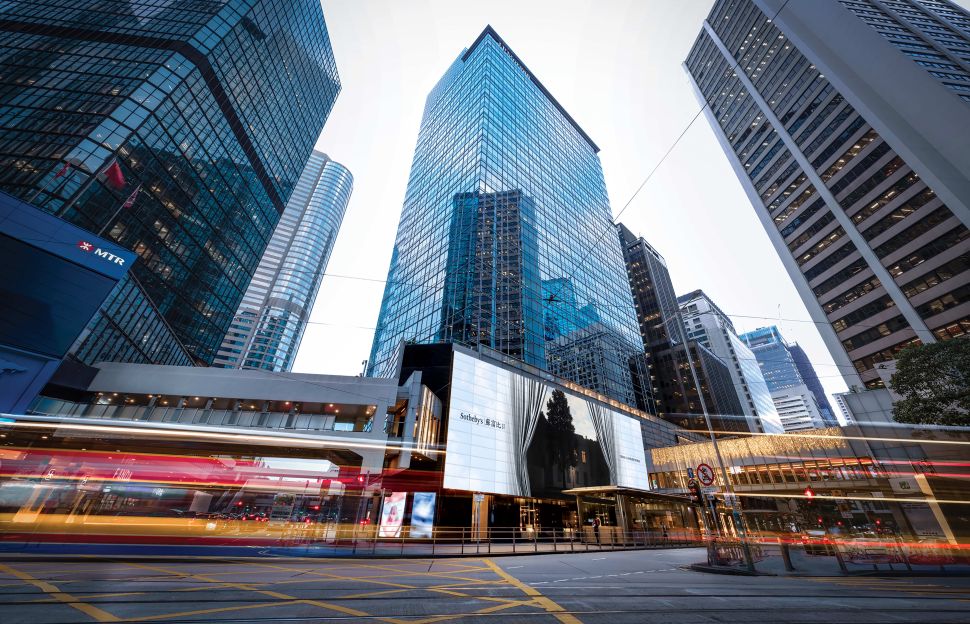



Ambition seems to be the auction house’s watchword in the region. Sotheby’s new 24,000-square-foot space is set to open at the end of July on two floors of the Landmark Chater, with road access in Central, one of Hong Kong’s most prestigious districts. The exact opening date remains under embargo, but Sotheby’s is organizing a massive event for its best clients to celebrate this momentous occasion. The launch of Sotheby’s Maison marks a new milestone in the auction house’s regional expansion, and this move should make enough noise to inspire even more enthusiasm in local collectors and new potential buyers.
This post was originally published on this site be sure to check out more of their content

